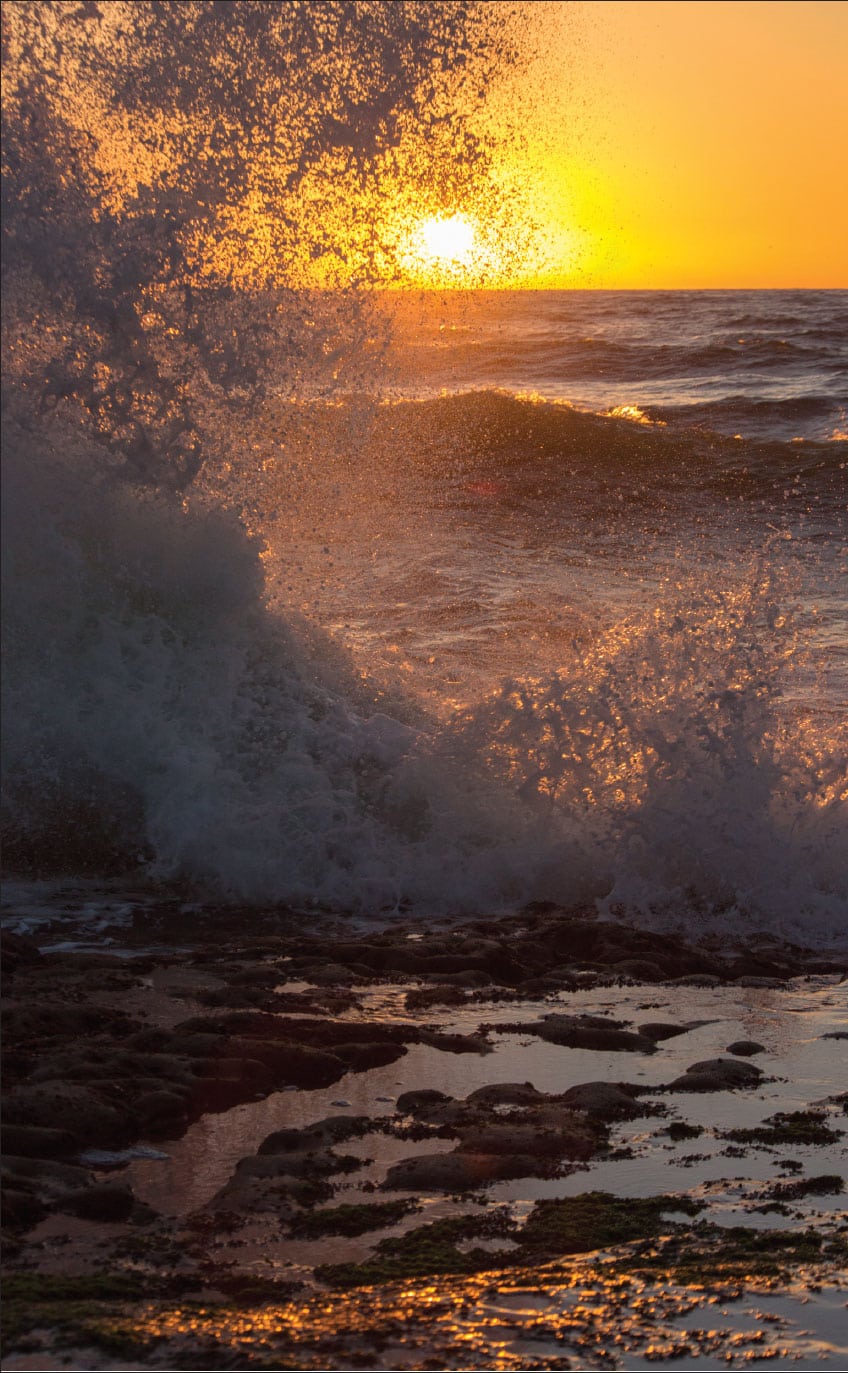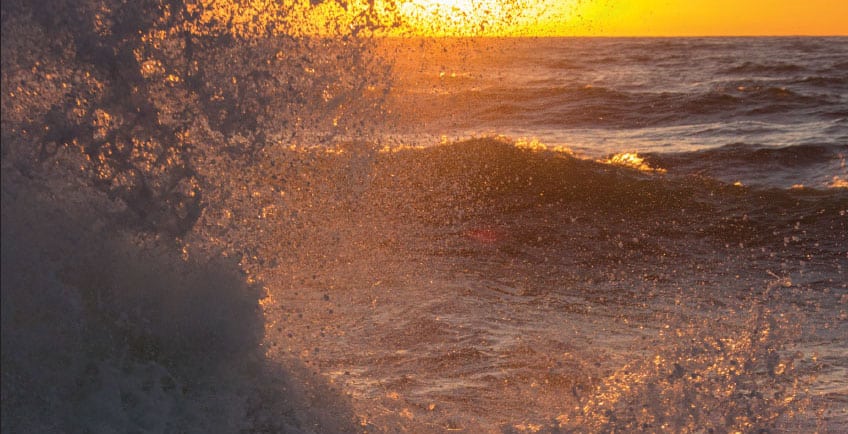“Sunset Waves” by Robin Conover
Canon EOS 5D Mark III, 28-300 mm,
3.5-5.6 L IS USM lens with circular polarizer
ISO 1250, f-8 at 1/500 second, Gitzo tripod
There are a few general rules in photography that become engrained in your mind as you learn the craft. Three of my favorites played a role in this image:
- F-8 and be there
- Fill the frame
- Keep the sun at your back
But, as we all know, once you understand them, rules are sometimes meant to be broken. Following two of these tennants and breaking the third led to this image.
I had observed a couple of cycles of waves crashing into these rocks along the Pacific Coast just north of San Diego and thought there might be a chance for an interesting image. Checking tidal and sunset times told me that high tide was going to coincide with sunset. The cloudless sky had me doubting that I could get a good sunset shot as the light would be very contrasty and probably blow out any detail in the waves.
I set up my tripod where I observed the highest splashes, hoping the waves would obscure the direct glare of the sun. Choosing an ISO of 1250 and a shutter speed of 1/500 of a second helped “freeze” the water as it arced toward the sun. An f-stop of 8 kept the depth of field relatively sharp from the foreground to the horizon.
With the cloudless sky, the harsh sunset light would have been much less interesting if I captured only the sun setting on rolling waves. It would have just been a ball of light in the sky and limited detail in the shadows. Filling the frame with the foreground rocks and the arcing wash of a crashing wave added interesting elements.
Take care when shooting into the sun. Protective solar eyewear is a must for your eyes, and making sure the sensor isn’t exposed to direct light for long exposures also helps prevent damage to your camera body.




